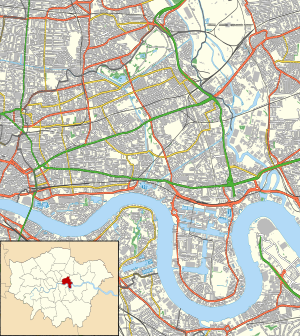1996 Docklands bombing
| London Docklands bombing | |
|---|---|
| Part of the Troubles | |
 |
|
| Location | South Quay station, Isle of Dogs, London |
| Coordinates | 51°30′1.27″N 0°1′4.76″W / 51.5003528°N 0.0179889°WCoordinates: 51°30′1.27″N 0°1′4.76″W / 51.5003528°N 0.0179889°W |
| Date | 9 February 1996 19:01 (GMT) |
| Target | Canary Wharf financial district |
|
Attack type
|
Truck bomb |
| Deaths | 2 |
|
Non-fatal injuries
|
"more than 100" |
| Perpetrator | Provisional IRA |
The London Docklands bombing (also known as the Canary Wharf bombing or South Quay bombing) occurred on 9 February 1996, when the Provisional Irish Republican Army (IRA) detonated a powerful truck bomb in Canary Wharf, one of the two financial districts of London. The blast devastated a wide area and caused an estimated £150 million worth of damage. Although the IRA had sent warnings 90 minutes beforehand, the area was not fully evacuated. Two people were killed and more than 100 were injured, some permanently.
It marked an end to the IRA's seventeen-month ceasefire. The IRA had agreed to a ceasefire in August 1994, on the understanding that Sinn Féin would be allowed to take part in peace negotiations. However, when the British government then demanded full IRA disarmament as a precondition for talks, the IRA resumed its campaign. After the bombing, the British government dropped its demand. A few months after Docklands, the IRA detonated the most powerful post-war Great Britain bomb in Manchester.
IRA member James McArdle was convicted of the bombing in 1998. He had been a member of an IRA sniper team in South Armagh. He was released two years later, under the terms of the Good Friday Agreement.
Since the beginning of its campaign in the early 1970s, the IRA had carried out many bomb attacks in England. As well as attacking military and political targets, it also bombed infrastructure and commercial targets. The goal was to damage the economy and cause severe disruption, which would put pressure on the British government to negotiate a withdrawal from Northern Ireland. In the early 1990s, the IRA began another major bombing campaign in England. In February 1991 it launched a mortar attack on 10 Downing Street, official residence and office of the British Prime Minister, then John Major, was holding a Cabinet meeting. The mortars narrowly missed the building and there were no casualties. In April 1992, the IRA detonated a powerful truck bomb at the Baltic Exchange in the City of London, its main financial district. The blast killed three people and caused £800 million worth of damage; more than the total damage caused by all IRA bombings before it. In November 1992, the IRA planted a large van bomb at Canary Wharf, London's second financial district. However, security guards immediately alerted the police and the bomb was defused. In April 1993 the IRA detonated another powerful truck bomb in the City of London. It killed one person and caused £500 million worth of damage.
...
Wikipedia

